
Труды по ЭКОНОМИКЕ 1 / История Банка Англии / Collectors' Banknotes 2008 Treasury and Bank of England (P. West, 2008)
.pdf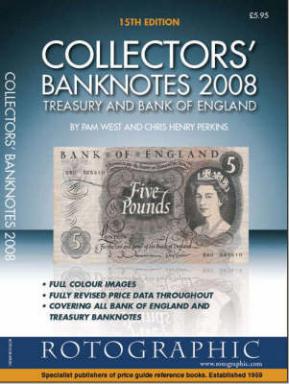
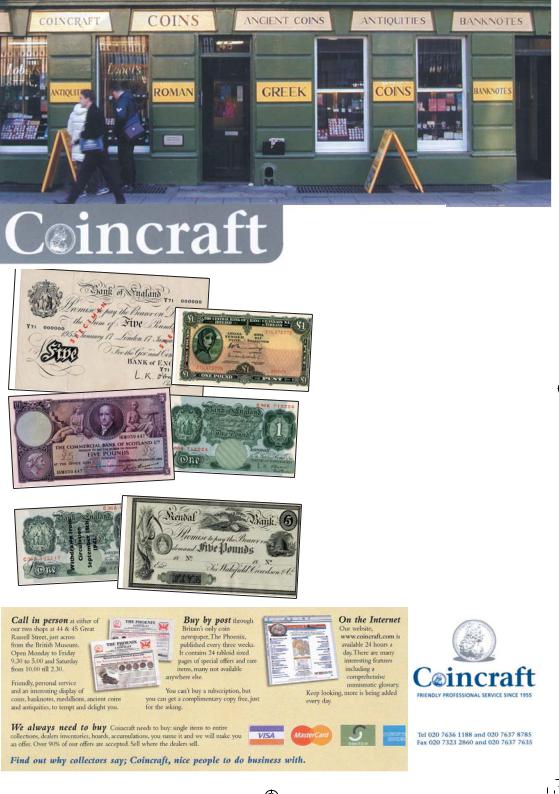
WE WANT YOUR
NOTES!
Coincraft desperately needs banknotes and is willing to pay special prices for British and world notes. Maybe you should think about selling your notes; it could be well worth your
while!
White notes, Bank of England notes, Treasury notes, Provincial notes; if you have them, we want them! With over 4,000 banknote buyers on our mailing list we are always in need of more notes. Perhaps you can help us and make your- 
self some money at the same time!
English notes, Scottish notes and Irish notes are especially in demand at this moment and that is reflected in our excellent prices. Single notes, original blocks of notes, hoards or collections; we are
happy to buy notes in any quantity. We also want world notes; either as single important notes, whole collections or accumulations.
We paid over £240,000 when we bought the famous lot of British military notes at auction. If you want to sell your notes without any hassle, at an excellent price and for immediate on the spot payment, then please contact Claire Lobel.
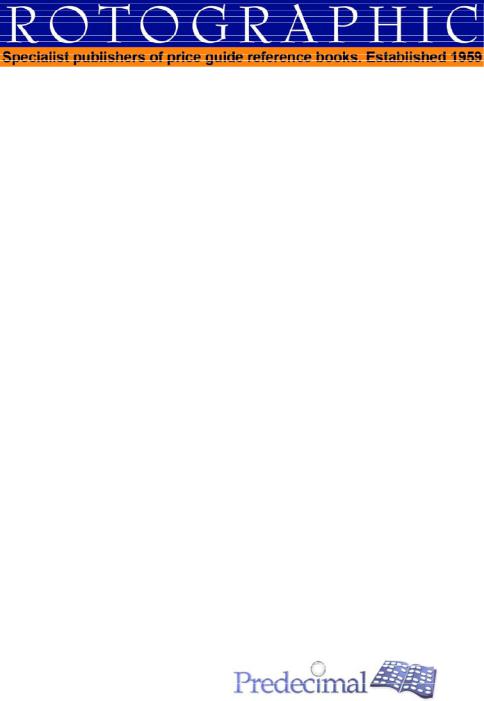
1
Collectors’ Bank Notes
Treasury and Bank of England
By Pam West & Chris Henry Perkins
15th Edition © 2008
INTERNATIONAL STANDARD BOOK No:
978-0-948964-72-5
A fully updated compilation of averaged selling prices drawn from dealers’ lists, auctions, notaphily magazines and websites.
The preceding 2006 15th edition of this book was
ISBN 0-948964-58-8.
Copyright Notice:
No part of this book may be reproduced in any format printed or electronic without prior permission from Rotographic. Bank of England notes cannot be reproduced in any form without prior written permission of the Bank of England and certain conditions being met.
Errors and Omissions:
Every effort has been made to ensure that the information and price data contained within this book is accurate and complete. However, errors do sometimes have a habit of creeping in unnoticed, and with this in mind the following email address has been established for notifications of omissions and errors: info@rotographic.com. Readers within the UK can also call the telephone number below.
www.rotographic.com
0871 871 5122
In Association with
2
Contents
Introduction and the Layout |
3 |
Serial prefix combinations and Grading |
4 |
Section 1: Treasury Notes 1914 - 1927 |
|
One Shilling, Half Crown, Five Shillings |
5 |
Ten Shillings - First type and Dardanelles Overprint |
7 |
Ten Shillings - Normal Green/Brown type |
10 |
One Pound - First type and Dardanelles Overprint |
12 |
One Pound - Normal Brown/Green/Purple type |
14 |
Section 2: Bank of England Notes 1694 - 1928 |
|
Introduction |
16 |
Bank of England notes 1694 - 1829 |
17 |
Bank of England notes 1829 - 1873 |
18 |
Bank of England notes 1873 - 1918 |
19 |
Bank of England notes 1918 - 1928 |
20 |
Section 3: Bank of England Notes 1928 - 2008 |
|
The Modern Series - Introduction |
21 |
Half Crown and Five Shillings - Peppiatt |
22 |
Series A - Ten Shillings |
23 |
Series C - Ten Shillings |
29 |
Series A - One Pound |
32 |
One Pound - The Guernsey Overprint |
34 |
Series C - One Pound |
40 |
Series D - One Pound |
47 |
White Fivers, Mahon - Peppiatt |
50 |
The Nazi forgery White Fivers |
52 |
White Fivers, Peppiatt - O’Brien |
53 |
Series B - Five Pounds |
55 |
Series C - Five Pounds |
57 |
Series D - Five Pounds |
59 |
Series E - Five Pounds |
63 |
Cypher Notes, the concept |
65 |
Series E - Five Pounds (continued) |
66 |
White Ten Pound Notes, Mahon - Peppiatt |
68 |
Series C - Ten Pounds |
69 |
Series D - Ten Pounds |
71 |
Series E - Ten Pounds |
74 |
White Twenty Pound Notes, Mahon - Peppiatt |
80 |
Series D - Twenty Pounds |
81 |
Series E - Twenty Pounds |
84 |
White Fifty Pound Notes, Mahon - Peppiatt |
89 |
Series D - Fifty Pounds |
90 |
Series E - Fifty Pounds |
91 |
White One Hundred Pound Notes, Mahon - Peppiatt |
93 |
Two Hundred, Five Hundred, One Thousand and others |
94 |
Appendices: |
|
Appendix I - Cross reference numbers, Treasury notes |
95 |
Appendix II - Cross reference numbers, B of E notes |
97 |
Bibliography and Websites |
100 |
International Banknote Society Membership form |
101 |
3
Introduction
Welcome to the 15th edition of Collectors’ Banknotes. This is the first colour edition, and the images have been reproduced at the highest possible resolution.
I admit to being primarily a coin dealer with limited involvement with banknotes, and the whole task of producing a banknote price guide was incredibly daunting at first. The last edition sold well but for this new edition, to ensure everything was as accurate as possible, I have called upon the help of Pam West, who is one of the countries leading banknote experts. Pam has been kind enough to update all the prices and to donate a few images of scarcer notes.
Pam has corrected a few minor errors, and has also added data - mainly concerning note serial number ranges - in order to make this book accurate according to current information and research. The market over the last couple of years has been strong and many notes are priced much higher in this new edition than they were in the last.
Pam and I both hope that this book provides you with accurate and complete information!
Chris Henry Perkins and Pam West
www.predecimal.com / www.britishnotes.com
December 2007
The Layout of this catalogue
As in previous editions, the Treasury notes are dealt with first in spite of the fact that the Bank of England issued notes appeared some two hundred years earlier. Treasury notes were issued for a specific length of time, and because they have an exact start and end point, they are complete. Bank of England notes are still being produced and it is logical therefore to have them after the Treasury notes so that they can be added to as new notes are issued.
Collectors’ Banknotes 2008 is therefore laid out in three sections:
The first section covers Treasury Notes printed between 1914 - 1927 including the unofficial Shilling, Half Crown and Five Shillings notes and the Dardanelles campaign overprint notes.
The second section covers Bank of England Notes 1694 - 1928, and includes approximate values for the earlier very rare banknotes where information is available.
The third section covers the modern Bank of England issues, from 1928 - date. This section is naturally fully updated with the new banknote issues each year.
The Layout of the Listings
The listings throughout the book are arranged in six or seven columns. The first column is always the reference number, this number is unique to this book and would have remained unchanged since the first edition (unless stated). New issues are given new reference numbers. The second column is for the date of the Note and the third column will contain the name of the signatory and other relevant variety information. Columns four to seven contain the values of the notes in varying states of preservation (see the introduction to grading on page 4).

4
Serial Prefix Combinations
At the beginning of most bank note ranges, the serial prefix format is specified along the following guidelines:
LNN = Letter-Number-Number e.g A12
NNL = Number-Number-Letter e.g 12A
LLNN = Letter-Letter-Number-Number e.g AB12
LNNL = Letter-Number-Number-Letter e.g A12B
L/N = Letter over Number e.g A 1
L2/N = Letter and small indicated Number over another Number e.g L2 1
Other combinations, should they occur will hopefully be quite obvious.
Some note types have either a dot or a dash under the ‘No’. Something like: N o or N o
A RADAR number reads the same backwards as it does fowards, e.g 796697.
An Introduction to Bank Note Grading
Grading of Banknotes often comes down to a matter of personal opinion and the ability to grade notes to a degree of accuracy often takes years of experience with different banknote types. Just as with coins, the most common way of grading banknotes is to assign a grade from a range of: Poor, Fair, Fine, Very Fine, Extremely Fine and Uncirculated. Notes that fall between the ‘whole’ grades are often referred to as ‘GVF’ (Good Very Fine), ‘NEF’ (Near Extremely Fine), or even ‘AEF’ (About Extremely Fine). Only perfect notes in as new condition should be labelled ‘Uncirculated’.
For novice collectors a penalty point system has been devised to help with grading. Please note that not all aspects of banknote condition are covered and often the best way to learn how to grade with any degree of accuracy is to befriend an experienced collector or dealer.
Assuming a perfect note is 100%, start at 100 and deduct points based on the following:
Holes |
Each pin hole |
5 |
Points |
|
Larger holes |
10+ Points |
|
Edges |
Fluffed or uncrisp portions |
5 |
Points |
|
Tears short of design |
10 Points |
|
|
Tears reaching into design |
20 Points |
|
Folds |
Very minor ‘Cashiers bend’ |
2 |
Points |
|
Discernable but unsharp fold |
5 |
Points |
|
Sharp, distinct crease |
10 Points |
|
|
Several folds (squeezed into small pocket) |
20 Points |
|
Dirt/Wear |
Area of just noticable discolouration |
5 |
Points |
|
Grubbiness - Cashiers marks |
10 Points |
|
|
Partial illegibility from dirt or wear |
20 Points |
|
For anything else that makes you less than happy and has |
|
|
|
not been penalised above deduct: |
1 |
- 5 Points |
|
Range: Up to 15% Poor. 16 - 30% Fair. 31 - 60% Around Fine. Very Fine 75 - 90%. Extremely Fine around 90 - 97% and About Uncirculated (AUNC) between 98 - 99%.
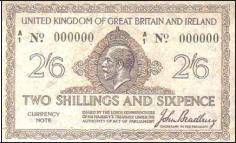
5
SECTION 1
Treasury Notes 1914 to 1928
The Chancellor of the day, Lloyd George, just a few hours after the midnight Declaration of War, touched on the need to preserve the country’s gold. The issue of notes for one pound and for ten shillings were to circulate ‘As full as sovereigns and half-sovereigns are current and shall be legal tender in the United Kingdom for the payment of any amount”
The Bank of England felt that large numbers of low-value notes wouldn’t be “safe” unless they were printed on special, handmade paper. This meant a relatively slow output. The Chancellor wanted them immediately, so instead, they were produced by the treasury. His announcement in Parliament was on August 5th; Waterlow Brothers and Layton provided the first of the new one pound notes on August 7th! Obviously, there must have been earlier discussions and preparations for such a speedy result. Possibly, a very fine Crystal Ball revealed the inevitability of The Great War.
An astonishing achievement, carried out over a single weekend, saw the printing of a vast number of the new notes. They were printed on ungummed postage stamp paper and carried the G.R. cypher watermark. Bearing the signature of the SECRETARY TO THE TREASURY John Bradbury, the pound notes were printed in black and, appearing just one week later, the ten shilling notes were in red. Both notes were the same size and were printed on only one side of the paper. It was advisable to have all your notes face upwards before counting. Many found face down, it is said, were thrown away as scrap paper! Thomas De La Rue and Company assisted Waterlow Brothers and Layton to produce the ten shilling note. Almost at once, a second series was devised. This time banknote paper was used and a much more elaborate watermark incorporated: the Royal Cypher, value, rose, thistle, shamrock, and daffodil. Still on one side only and in the same colours, some sorting assistance was provided by varying the sizes slightly between the two values. Included in this second series is the issue of: THE DARDANELLES CAMPAIGN Overprints (pages 9 and 13). Third issue “Bradburys”, chiefly in brown (£1) and green (10/-) speedily followed, Both sides were printed and the “typical” British banknote was established.
The original purpose of the Treasury note was to gather in the gold. So successful was the exercise that silver was targeted and notes were prepared for five shillings (5/-), half-a-crown (2/6d), and even one shilling (1/-). Fear of runaway inflation through notes unbacked by real assets led to the destruction of most of these.
Two Shillings and Sixpence
Image used with permission of Pam West Britishnotes.
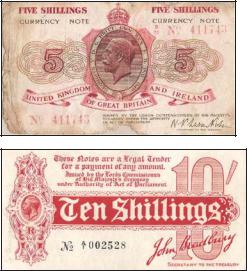
6
H.M. TREASURY NOTES
(These three fractions not officially issued)
No. |
Date |
Signature |
Fine |
VF |
EF |
ONE SHILLING
Central vignette of H. M. King George V. Green, brown, white 104x66mm - 4 1/8 x 2 5/8 in
RT1 |
1918 (Nov) |
John Bradbury: |
|
|
|
|
|
A/1 (probably A/1 No. 000000 only) |
|||
|
|
|
|
|
£5000 |
RT2 |
1919 (Nov) |
N. F. Warren fisher: |
|
||
|
|
L/N |
B/- (only) |
£5000 |
|
|
|
|
HALFCROWN |
|
|
|
|
|
(Two Shillings and Six Pence) |
||
|
Central vignette of H. M. King George V. OIive-green, chocolate and white. |
||||
RT3 |
1918 (Nov) |
John Bradbury: |
|
|
|
|
|
L/N |
A/1 No. 000000 |
£5000 |
|
|
(Auction ‘96) |
Five Colour Trial |
|
£24,000 |
|
RT4 |
1919 (Nov) |
N. F. Warren-Fisher: |
|
||
|
|
L/N |
A/- |
|
£5500 |
|
|
|
FIVE SHILLINGS |
|
|
|
Central vignette of H. M. King George V. Violet, green and white 5 x 3in -127x76mm |
||||
RT5 |
1917 (Dec) |
John Bradbury: |
|
|
|
|
|
L/N |
A/- |
(one known, noted 1992) £13,300 (UNC) |
|
RT6 |
1919 (Nov) |
N. F. Warren-Fisher: |
|
||
|
|
L/N |
B/- |
|
£5000 |
RT6
Image courtesy of
Pam West Britishnotes.
RT8a
Image courtesy of
Pam West Britishnotes.
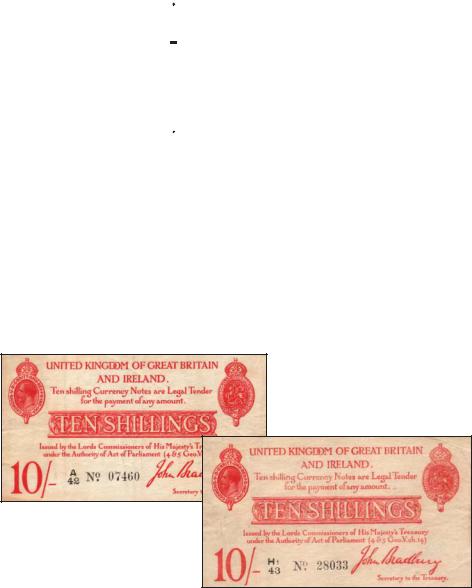
7
H.M. TREASURY NOTES
No. |
Date |
Signature |
Fine |
VF |
EF |
UNC |
TEN SHILLINGS (Type illustrated on previous page)
Small vignette at left - Very large value at right (see picture on previous page) Red and white - Printed one side only, on stamp paper - 127 x 63.5mm - 5 x 2 1/2 in
1914 (Aug) |
John Bradbury: |
|
|
|
|
RT7 |
L/N - No 6 digits (No with dot under) |
|
|
||
|
S/- |
|
£550 |
£950 |
£1450 |
RT8 |
L/N - No 6 digits (No with dash under) |
|
|||
|
A/1 |
£200 |
£375 |
£900 |
£1200 |
|
A/- |
£150 |
£325 |
£700 |
£1000 |
RT8a |
Variety has no space between prefix and serial (as on page 6) |
||||
|
A/- |
|
|
£700 |
|
RT9 |
L/N - No 5 digits (A, B, C possibly other letters, No with dot un- |
||||
der) |
B/- |
£300 |
£750 |
£1250 |
|
|
|
||||
TEN SHILLINGS
UNITED KINGDOM OF GREAT BRITAIN AND IRELAND
Red and white, printed only on one side - 136 x 76mm -5 3/8 x 3 in
Watermark of wavy lines, Royal Cypher and British Emblems.
1915 |
John Bradbury: |
|
|
|
RT10 |
L/N 5 digits - A to M |
|
|
|
|
£100 |
£250 |
£450 |
£800 |
RT11 |
L1/N 5 digits - A1 to M1 |
|
|
|
|
£70 |
£150 |
£450 |
£850 |
RT10
RT11
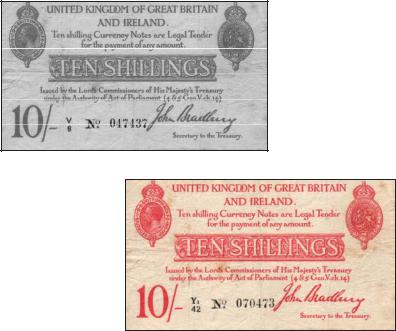
8
H.M. TREASURY NOTES
No. |
Date |
Signature |
Fine |
VF |
EF |
UNC |
TEN SHILLINGS
UNITED KINGDOM OF GREAT BRITAIN AND IRELAND
Red and white - Printed only on one side - 136 x 76mm - 5 3/8 x 3 in
Watermark of wavy lines, Royal Cypher and British Emblems
1915 |
John Bradbury: |
|
|
|
|
RT12 |
L2/N |
A2, B2 or C2 + 5 digits |
|
|
|
|
|
£150 |
£350 |
£600 |
£900 |
RT13 |
L/N pIus 6 digits (N to Z) |
|
|
|
|
|
|
£150 |
£250 |
£600 |
£900 |
RT14 |
L1/N plus 6 digits (O1 to Y1) |
|
|
||
|
|
£150 |
£250 |
£600 |
£900 |
(noted 1999) |
S1/62 hand-signed by Versailles Treaty signatorys “torn” £880 |
||||
(noted 2000) |
Rounded Shamrock watermark: VF |
£500 (see RT23b) |
|||
RT13
Image donated
RT14
